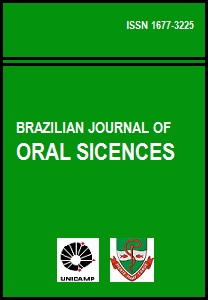Abstract
Nonsyndromic orofacial cleft (OFC) derives from an embryopathy with failure of the nasal processes and/or fusion of the palatal shelves. This severe birth defect is one of the most common malformations among live births. Human cleft is composed of two separate entities: cleft of the lip with or without palate (CL±P) and cleft palate only (CPO). Both have a genetic origin, whereas environmental factors contribute to these congenital malformations. In this review we analyze the role of drugs related to the onset of cleft. The data were obtained from (i) epidemiologic studies (ii) animal models and (iii) human genetic investigations. These studies have demonstrated a relation between certain drugs (steroids and anticonvulsants) taken during pregnancy and a higher risk of generating offspring with OFC whereas no clear relation has been demonstrated between aspirin and OFC.The Brazilian Journal of Oral Sciences uses the Creative Commons license (CC), thus preserving the integrity of the articles in an open access environment.
Downloads
Download data is not yet available.

